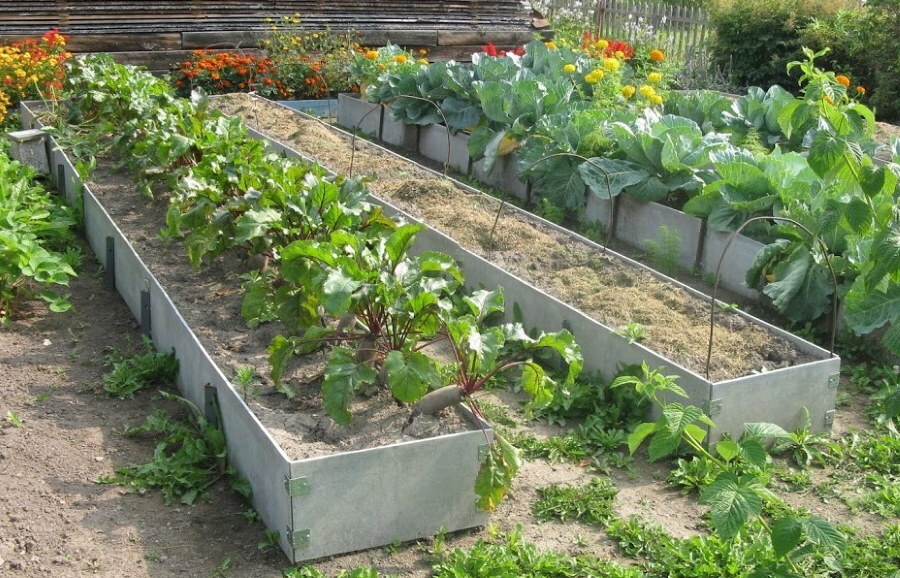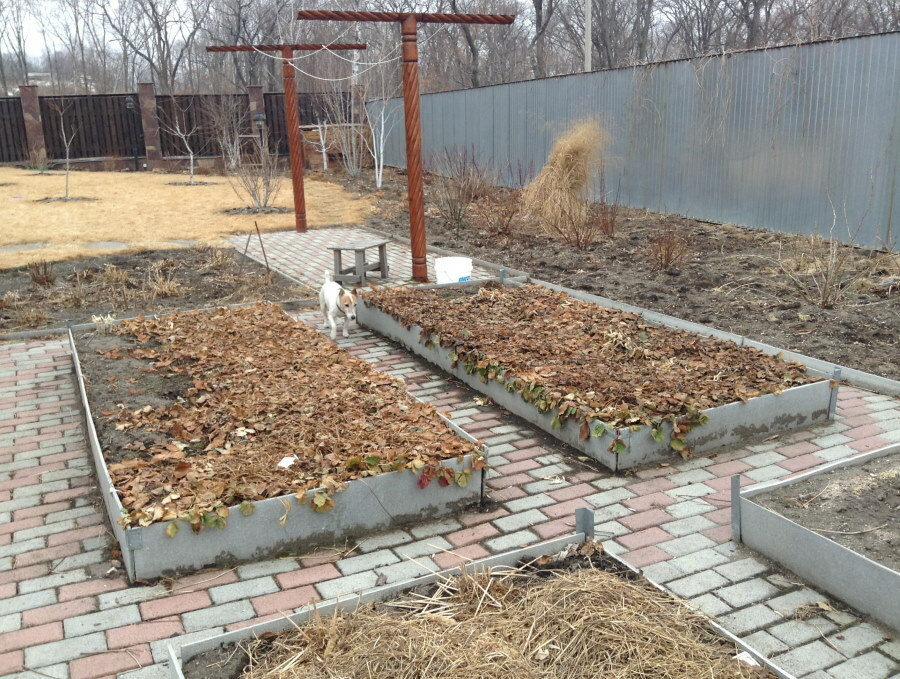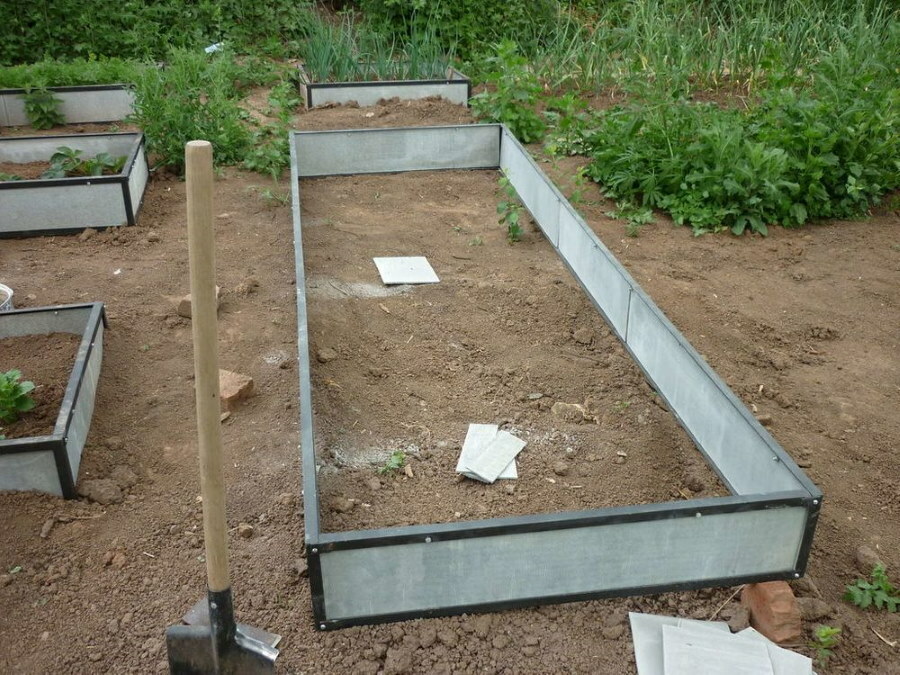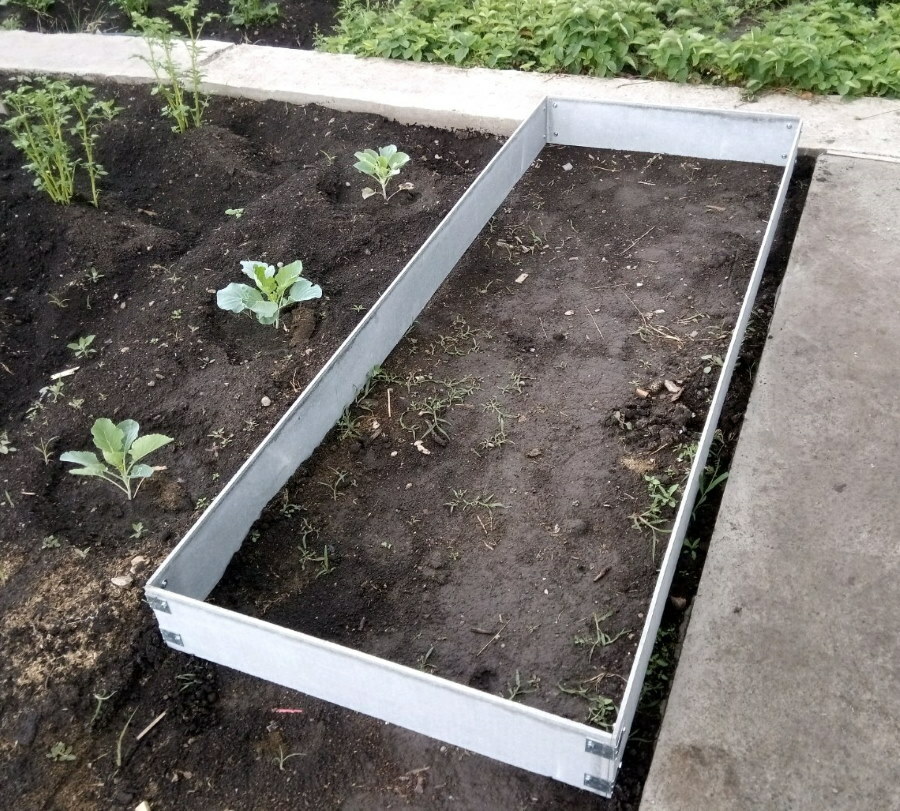Gardeners often use the available materials to improve the area and make planting easier to process. Slate beds are found on almost every land plot, they are easy to use, neat and accessible to all owners of gardens and vegetable gardens.

The design of the beds made of flat slate is very simple and available for do-it-yourself production.
Why use slate in landscape design
Content
- Why use slate in landscape design
- Features of the use of slate at their summer cottage
- Popular materials for high beds
- The choice of material for high beds
- Is it possible to enclose the beds with slate - how to choose a safe material
- Video: Do-it-yourself durable flat slate beds
- Photo examples of beautiful slate beds
The old covering when replacing the roof on the house can be used in the garden. The material is used for fencing beds, cesspools, when constructing a foundation for a greenhouse. With an original fantasy, slate will not only benefit the site, but also decorate it.

Affordable price and durability are the main advantages of slate beds
There are two types of slate: wave and flat. To create the beds, the sheets are cut to the required width and length and buried in the trench. When using wave material, there is no need for additional fastening of sheets to each other, they are connected by two extreme waves. Flat slate for beds needs additional fastening with metal plates and corners so that the fence does not move apart and stands exactly in place.

The wave structure of the material provides the slate with strength sufficient for the construction of high beds

Flat slate is absolutely not inferior to the wave in terms of moisture resistance and resistance to temperature changes

Also, for beds, you can use both materials at the same time.
The slate structure is assembled in a few hours. The lightness and strength of the material make it possible to forget about the fence for a long time. It is not subject to decay and moisture during irrigation and rain. The material heats up well in the sun and lets heat into the ground, so when using tall beds, yields increase.
Greenhouse with slate beds:
Tall structures do not flood with water in case of excessive rainfall, and weed control is reduced to zero. Mold does not spread on the material, and insects do not live, which can damage the plantings.
Features of the use of slate at their summer cottage
The advantages of slate:
- Availability. The cost of the material is low compared to other types of fences. Old slate is often used, which is simply thrown away, giving it a second life.
- Diversity. The material is easily cut into the desired pieces according to the size. You can create any shape and configuration of the beds. From small cuts, circles and polygons are laid out for flower beds, rectangles and squares for beds with vegetables and berries.
- Any colour. The slate can be easily painted, you can make the fence multi-colored and add bright colors to the site. With the artistic skills of the owner, whole pictures are often drawn on the material. You can update the color scheme as desired every season.

The color of the slate makes the beds much more attractive and significantly increases the service life of the fences.
Flat bed slate looks less decorative than wave slate. But on a flat surface, you can give free rein to imagination and draw a masterpiece of fine art.
Slate is used not only for fences on the site, they are fenced off front gardens or the lower part of a metal fence to avoid the entry of animals.
When using high beds, the distance between them is covered with pebbles or sown with lawn grass. It looks very neat and aesthetically pleasing and there is no dirt in the aisles.

Arrangement of row spacings gives the site an attractive look and facilitates plant maintenance
Popular materials for high beds
By raising the beds above ground level, gardeners solve a large number of problems associated with productivity and the convenience of land cultivation.

High beds in comparison with classic ones have a number of advantages
The main advantages of lifting beds:
- The ground warms up at a height faster, planting can be carried out earlier by 1-2 weeks. This affects the yield and maturation of vegetables and berries.
- Compost is laid in the fence, which gives additional heat to the plantings.
- On fenced areas, it is easier to put arcs to close the landings with covering material.
- With intense precipitation, the water does not stagnate, the likelihood of fungal diseases on plants decreases.
In cold regions, the fence is made with double walls. Sawdust or other heat-insulating material is poured into the middle, which protects the sprouts in case of frost on the soil.
In the southern regions, the inner side of the fence is covered with waterproofing compounds or plastic wrap is laid, which retain moisture.

Beds of flat slate for garden strawberries

Slate beds in a polycarbonate greenhouse
The choice of material for high beds
Different materials are used for fencing, which have their own advantages and disadvantages. Each of which solves tasks and problems for the region in which the land plot is located.

The choice of material for the garden is influenced by its availability and the possibility of self-processing
Advantages and disadvantages:
- Slate. Convenient to install and easy to clean. A dirty surface can be washed out with a stream of water. The material does not allow the spread of fungal diseases on the surface; insect pests and rodents do not like it. But it quickly heats up in the sun and dries out the plantings, you will have to increase watering. The service life of unpainted slate is 30 years, while painted slate reaches 50.
- Wood. Safe for plants and maintains a good microclimate in the garden. Does not heat up in the sun and protects plantings well in frost. But when installing wooden structures, it is necessary to treat the material with antibacterial compounds that will protect the wood from moisture and the emergence of pathogenic bacteria. The wooden structure will last 7-10 years.
- Asbestos. Contact of asbestos sheets with the ground is not recommended, the acid-base balance is disturbed. The material does not tolerate high humidity and begins to deteriorate quickly. It is better to make additional thermal insulation of the structure out of them. Place them between the walls of the double railing.
- Brick. Natural and durable material, but expensive. Often bricks from old stoves and fireplaces are used for fences. Raising the bed is a laborious process: cleaning surfaces from the old solution, mixing a new one and laying. Under the brick wall, you need to lay out a base of stones in the trench, otherwise, at a height of more than 30-40 cm, the fence will be unstable.
- A rock. The bed is raised using a solution. Or grids, when a double metal structure of different shapes is created, stones are superimposed in the gap. This design looks harmonious on the site, is appropriate for any design and will last 20 years.
- Polycarbonate. Keeps warm well and does not heat up. But the material is weak to break, with the onset of cold weather with excessive moisture in the beds, the fence can crack. Polycarbonate is fragile; difficulties may arise during installation and fixing of the structure. You need a solid base, which is made of a metal mesh, and the material is fixed to it. The fence will last 3-5 years.
- Metal. They are used for fences with a thickness of 0.5-1.0 mm, you can use the old roof covering. But the metal is not durable and, when in the ground, it quickly becomes covered with rust, it destroys the structure of the soil and is unsafe for plants. The height of the fences is limited, no more than 30 cm above ground level, otherwise the bed will overheat in the sun and dry out the ground. The service life of the metal is 5-7 years.
There is a significant difference between the materials; gardeners often use what is available to them. But when choosing, consider the safety for plantings and the durability of the structure.

After analyzing the advantages and disadvantages of various materials for the beds, we can conclude that slate will be an excellent choice in terms of the ratio of cost and durability
Is it possible to enclose the beds with slate - how to choose a safe material
The divergence of opinions on the safety of slate sheets when interacting with the soil stops summer residents from using this material on the plots.
In terms of strength and durability of use, slate is second only to masonry and brickwork, and it is much easier to make a high bed out of it.

The most reliable will be a garden bed on a frame made of metal corners.

A simpler bed is a box of slate strips, fastened at the corners using available methods.
Mounting options:

For frameless beds, the long sides must be reinforced with spacers.
In the country, the material will do more good than harm. It is safe for humans and the environment due to its strength and moisture resistance. When buried in the ground, it does not interact in any way with the composition of the soil and does not emit harmful substances.
Care must be taken when cutting and drilling sheets. Under mechanical stress, asbestos dust is formed, which is dangerous for the respiratory tract and human eyes. Use personal protective equipment during work.
When installing painted sheets for decorating beds, install the slate with the right side out. When the paint interacts with the soil, it will break down and release harmful substances that will get into the vegetables.

The sides of the slate bed can be hidden under a neat edging made of wooden slats
With a little skill and with a minimum of tools, you can create a unique design at your summer cottage from beds of different shapes, sizes and heights that will last for decades.
Video: Do-it-yourself durable flat slate beds
Photo examples of beautiful slate beds

